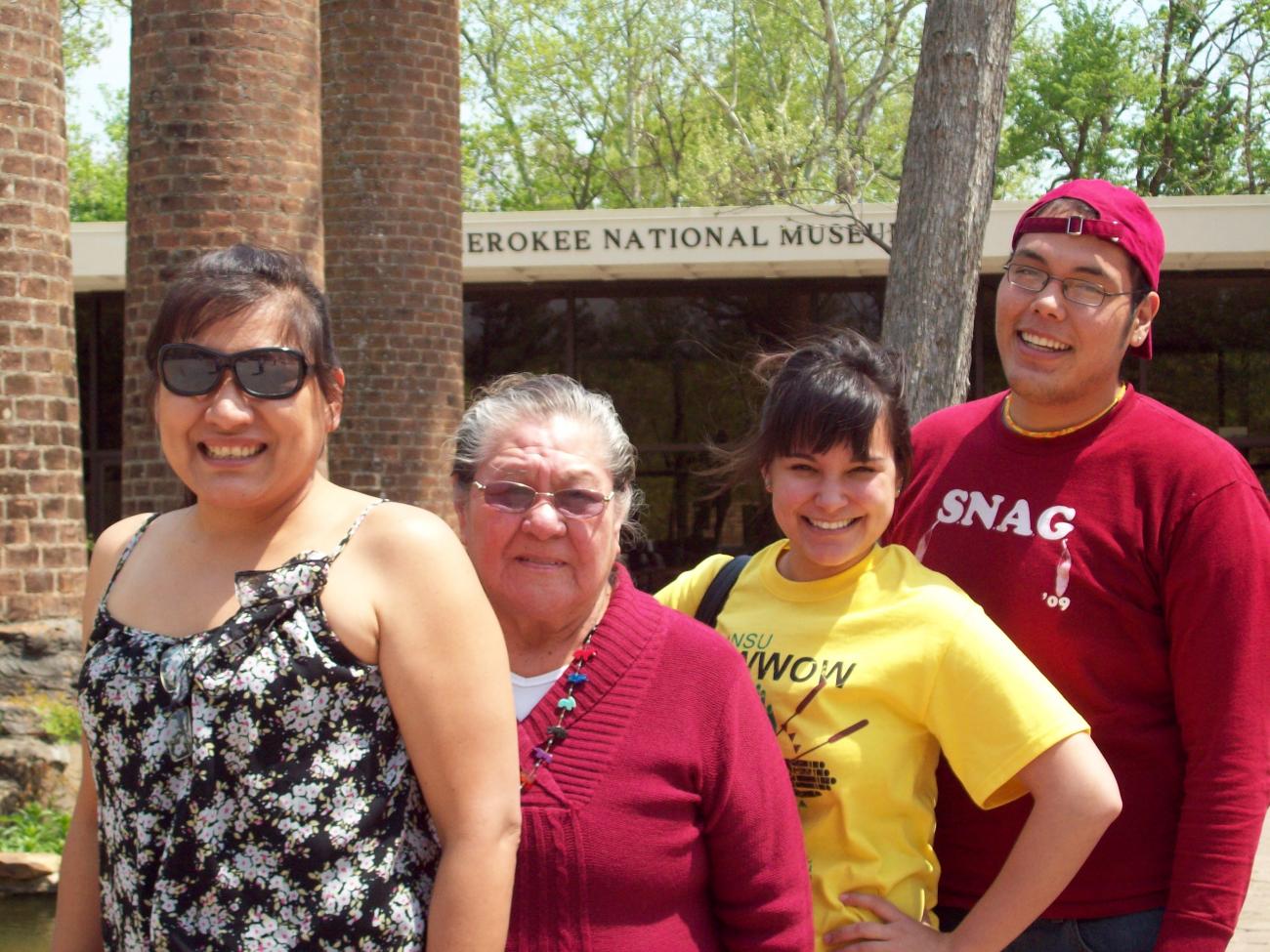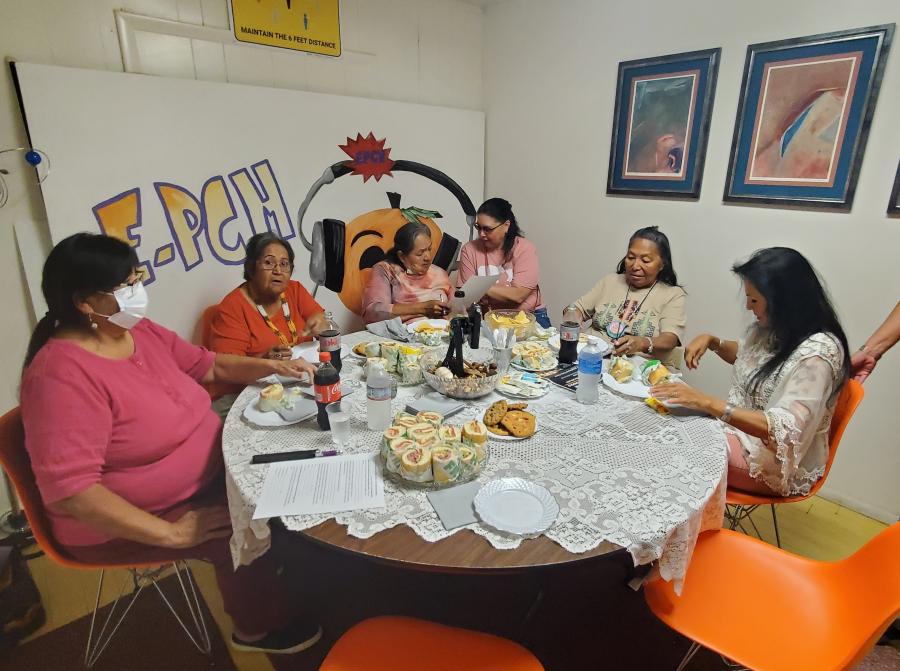
The team-based master apprentice project based at the Sac and Fox Nation has completed a multi-year effort to significantly boost the language proficiency of three second language learners. Funded by a grant from the U.S. Department of Health and Human Services’ Administration for Native Americans, the project was jointly administered by Cultural Survival’s Endangered Languages Program and the Sauk Language Department in Stroud, Oklahoma.
With only a handful of local fluent elders available as language mentors, the innovative approach adapted the master apprentice program developed more than twenty years ago by the Advocates for Indigenous California Language Survival by working as a language team, rather than in an elder-learner language pair. Apprentices spent more than twenty hours in structured language immersion training sessions with an elder fluent speaker each week for the past three years in order to improve their language abilities to the level where they are capable of complex conversations with first language Sauk speakers.
The team last week hosted an impact evaluator from the Administration for Native Americans, based in Washington, D.C., to demonstrate the ripple effects federal funding has had in the community. The apprentices teach intensive high school language classes, evening community classes, and host open houses and other events for the tribal community to encourage broad participation in language learning opportunities, and to create a pipeline of new speakers for their endangered language. The project also supported annual language immersion field trips for elder speaker mentors and the apprentice team to visit their sister language community, the Meskwaki Nation based in Tama, Iowa, who speak the Fox language, which is very closely related to Sauk linguistically. Sauk elders living in the Stroud area have very few counterparts to converse with in their language, so the visits to a more intact language community with fluent speakers among multiple generations served as an opportunity to encourage language recall and development, and the enjoyment of engaging with other first language speakers.
Recording and archival quality materials purchased with the grant funding also have enabled the language department to continue to build on its growing audio and video archive. While the tribal Language Department is less than a decade old, it has established itself as a highly effective program that reaches hundreds of community members annually via programming geared at supporting language awareness and development across the generations. With three young highly proficient speakers now in their twenties and thirties, the department will now move to recruit new apprentices from the public high school courses they offer in cooperation with the local school district.
Administration for Native Americans (ANA) competitive grant funds are available on an annual basis to support tribal language programs in two categories—Native Language Maintenance and Preservation, and the Esther Martinez Initiative, which supports language immersion schools.
Watch for more language leadership from the Sauk Language Department as they work with Cultural Survival to submit the final objective evaluation report this month to ANA, and to disseminate a detailed team-based master apprentice teaching book developed during the past three years. Visit TalkSauk.com to download a language grammar and to learn basic vocabulary. Visit OurMotherTongues.org to meet the Sauk Language Department apprentices.


